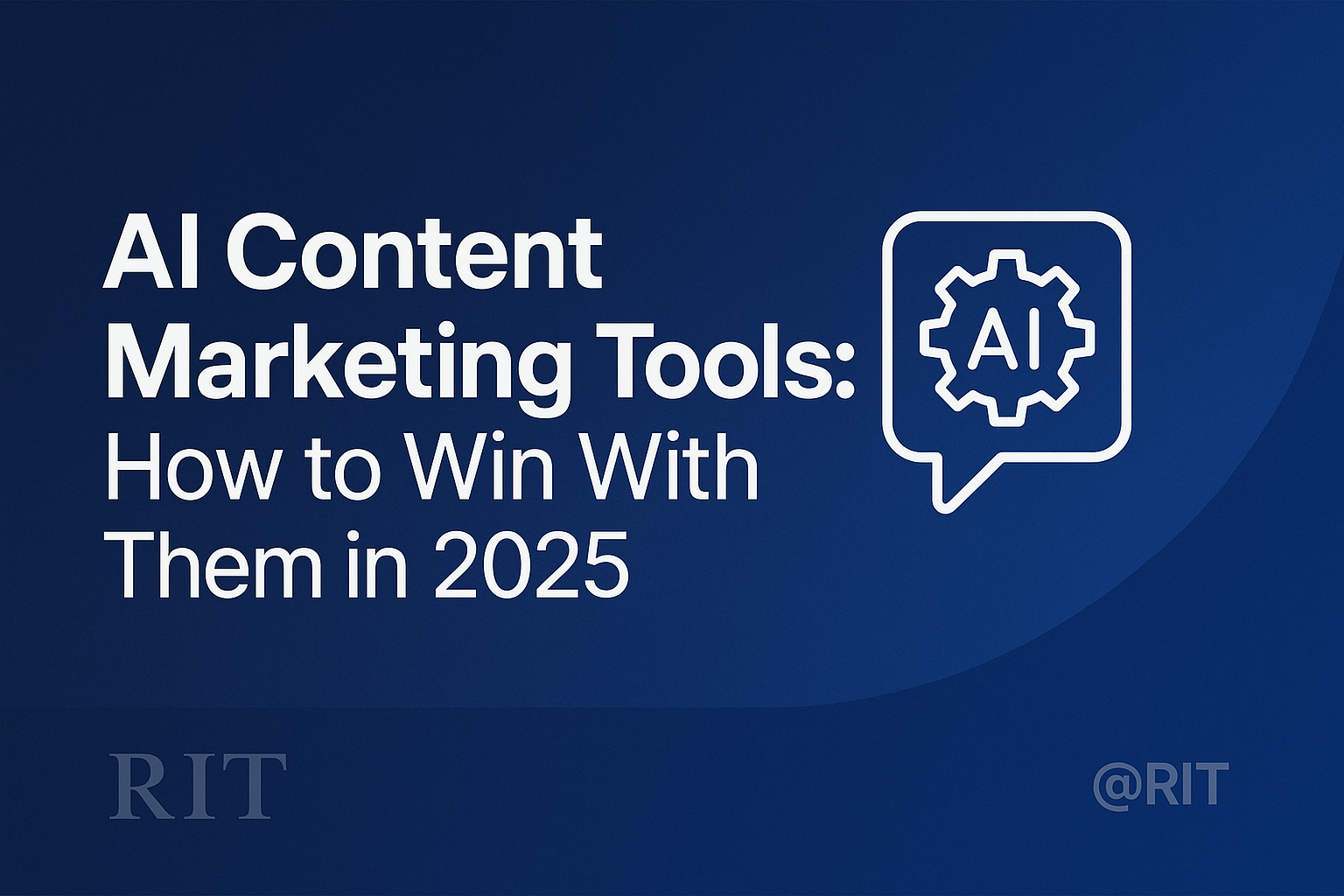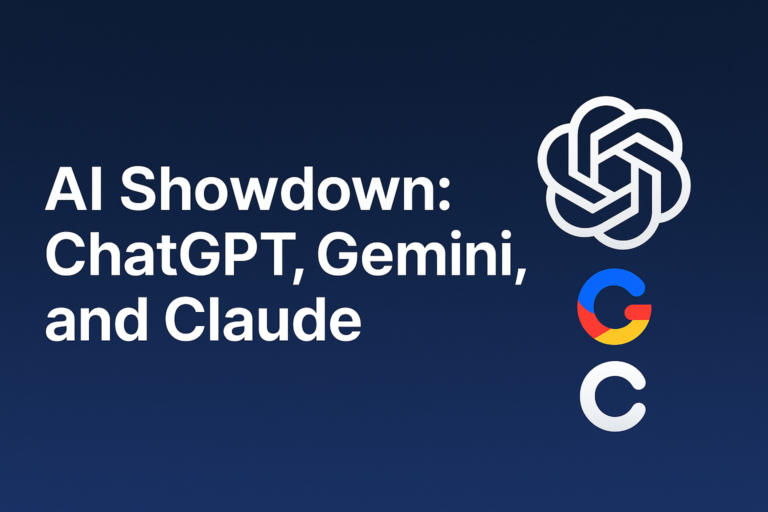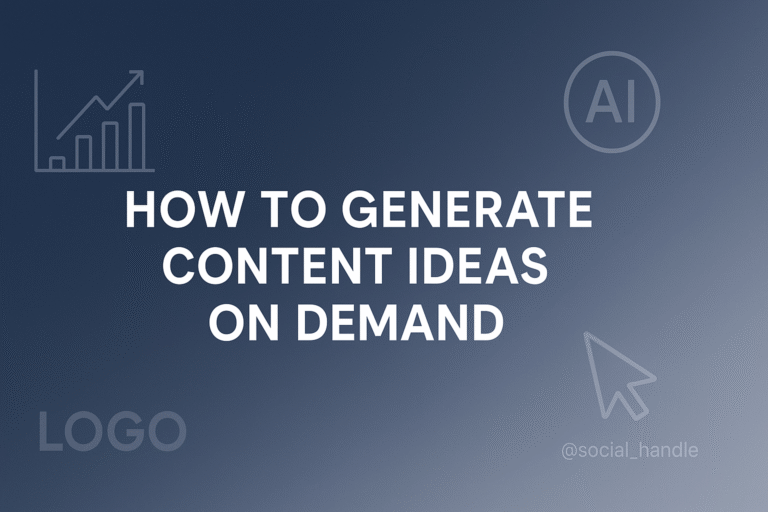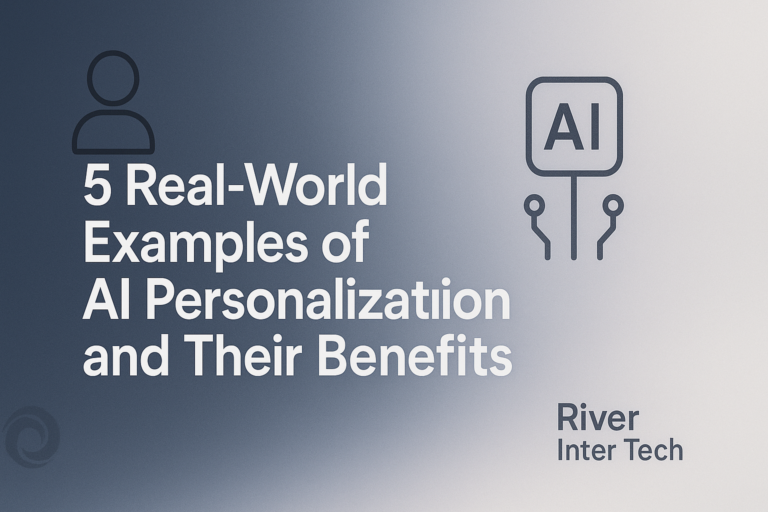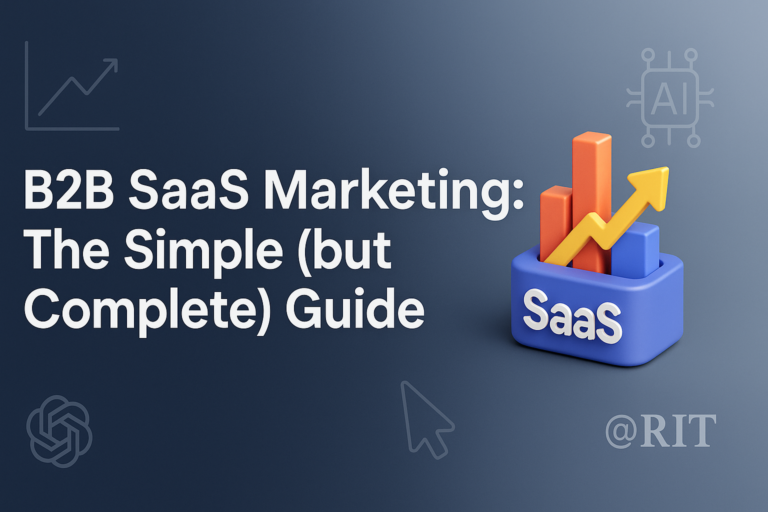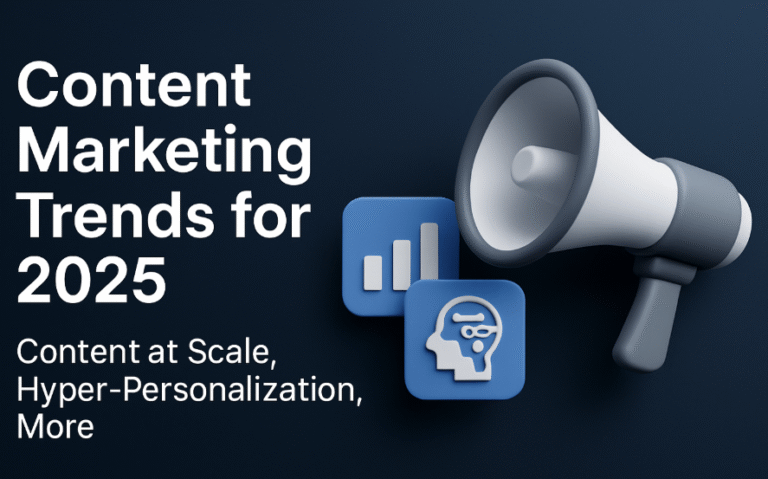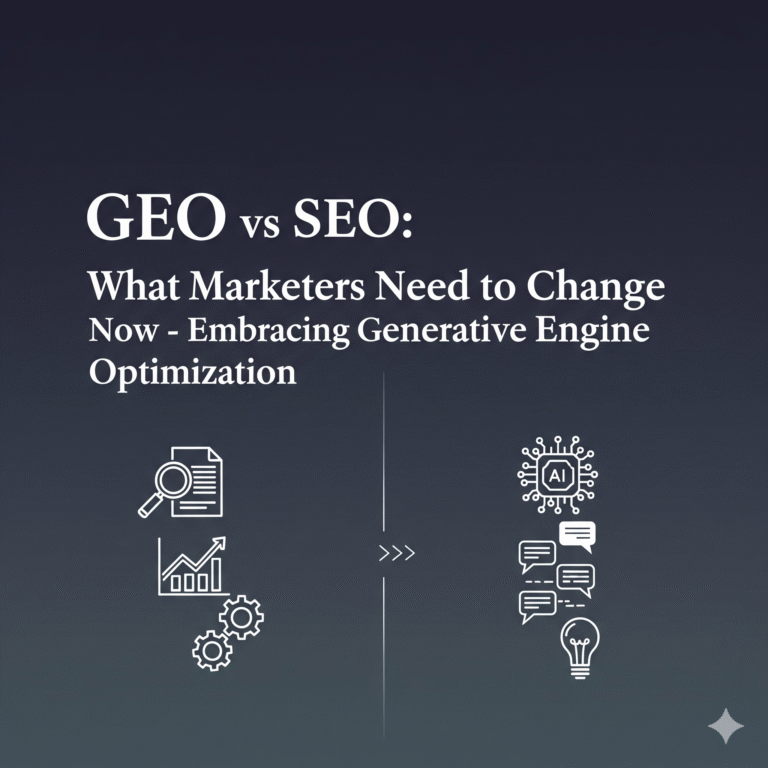AI Content Marketing Tools: What They Are & How to Win in 2025
Deadlines don’t care if you’re stuck. That’s the problem. Research shows over 70% of content creators feel overwhelmed by timelines, not creativity. You know what you want to say but making it happen on time? That’s the bottleneck. Enter ai content creation tools.
They don’t replace your ideas. They speed them up. They strip away the busywork so you can focus on what actually matters: your message.
This guide is your shortcut to understanding how these tools work, where they shine, and how to pick the right ones for your AI content marketing workflow.
What Is AI Content Creation?
AI content creation is exactly what it sounds like: using artificial intelligence content creation tools to help create content. These softwares are built on machine learning, large language models (LLMs), and natural language processing that generates or enhances digital media.
These are writing, video, audio, image, or planning tools that learn patterns, mimic tone, and respond to prompts in seconds. The evolution is fast. Early models in 2018 could barely form paragraphs.
Today tools like GPT-4o, Midjourney v6, and Synthesia can build cross-platform campaigns with just a few inputs.
We’ve gone from keyword stuffers to ai content creators. From gimmicks to genuine strategy partners.
How It Works
At the heart of most tools are LLMs (like GPT) or diffusion models (for visuals). These systems are trained on billions of data points such as books, articles, videos, and code. They learn patterns in language, visual composition, and audio pacing.
When you give a prompt, the tool maps it to those patterns and generates content in real time. Many platforms use APIs to connect their core AI with user-friendly frontends like Jasper for marketing, Synthesia for videos, or ElevenLabs for voice.
Simple flow: You give a prompt → AI interprets it → Tool delivers content → You refine it. That loop? It’s where speed meets creativity. These tools represent a major shift in content creation using AI across formats.
Benefits vs. Limitations
The upside? Speed. AI tools handle content repurposing, summaries, outlines, and drafts in a fraction of the time. They help scale campaigns across formats such as email, blog, social, video. They boost SEO by helping you target clusters and keywords more efficiently.
They allow one creator to perform like a full team. Tools like Jasper and ChatGPT are now foundational in ai powered content creation.
But there’s a catch. Originality can suffer. AI still hallucinates facts. It sometimes mimics tone but misses nuance.
You can’t skip human review. You have to infuse your POV. Otherwise, you risk sounding like everyone else. So the rule is simple: Use AI for content creation volume, not vision.
Where AI Shines: Use-Case Matrix
Written: Great for drafts, outlines, ad copy, product descriptions, blog intros.
Video: Ideal for scripting, subtitles, scene breakdowns, or auto-generating short clips.
Audio: Voiceovers, podcast transcripts, summarization, tone adjustments.
Image: Concept art, social media graphics, blog illustrations.
Planning/Optimization: Content calendars, keyword clustering, A/B test ideas, style guides.
This cross-format strength is where content AI excels. These tools help in speeding up ideation while keeping creative control.
Choosing the Right Tool (F.I.T.S. Framework)
Finding the best AI content creation tools depends on four things: Function, Integration, Team, and Spend.
- Function: What type of content do you need to create? Text, video, audio, images?
- Integration: Does it play nice with your current stack? CMS? Notion? Google Docs?
- Team: Is it for solo use or scale? Do you need collaboration or approvals?
- Spend: What’s your budget? Is a free plan enough, or do you need advanced features?
Match your needs to the F.I.T.S. checklist before you commit to any AI content creation software. Especially when you’re planning long-term content creation with AI, tool alignment matters.
Top AI Tools by Content Type (2025 Edition)
Written
- Jasper: Long-form marketing copy with brand voice templates.
- ChatGPT: Flexible for outlines, emails, and idea generation.
- Copy.ai: Great for product copy and cross-channel consistency.
These tools are leaders in ai content generation for text, especially when speed and tone matching are top priorities.
Video
- SundaySky and Synthesia enable video production through prompts and avatars. Synthesia is ideal for those embracing ai in content creation for tutorials and training videos.
Audio/Voice
- ElevenLabs creates human-sounding narration using ai automated content creation workflows. From audiobooks to podcasts, these tools expand what creators can do solo.
Image
- Midjourney v6 and DALL·E 4 are top picks for social graphics, concept art, and product imagery. They’re powerful ai content generation tools for visual storytelling.
Planning/SEO
- MarketMuse, Surfer, and Frase optimize planning using content creation AI to suggest clusters, track SERPs, and improve readability.
Advanced Workflows & Integrations
Smart creators don’t just use tools—they connect them. Zapier and Make allow ai content creation tool chains: ChatGPT writes → Zapier posts → Grammarly polishes → CMS publishes. This system works especially well when scaled through content creation using AI automation.
Tools like Notion AI, WordPress plugins, and Google Docs add-ons offer deeper workflow integration. For those aiming to move faster in AI content marketing, plug-and-play setups save hours each week.
Ethical & Legal Guardrails
AI output needs oversight. Always check for fact accuracy. Disclose AI use in bylines or footnotes if publishing at scale. Use watermarking for AI-generated visuals. Attribute co-created work properly. And never feed private or proprietary data into public AI tools.
If you’re building a library of prompts or results, make sure your team understands the boundaries of artificial intelligence content creation. Respect IP. Avoid bias. Be transparent with clients and collaborators.
Future Trends: Multimodal & Agentic AI
Multimodal tools like TikTok’s AI-Alive blend text, video, voice, and image in real time. Agentic AI goes further rewriting blog posts, updating tags, even scheduling content on your behalf.
These tools signal what’s next for ai content creators: software that doesn’t just assist. It takes initiative. For leaders in ai content marketing, the next skill isn ’t using tools—it’s orchestrating them.
7-Day Action Plan to Pilot AI in Your Workflow
Day 1: Identify one bottleneck in your content process.
Day 2: Choose a tool that addresses it.
Day 3: Run a prompt test.
Day 4: Refine the result.
Day 5: Plug it into your calendar or CMS.
Day 6: Add a feedback loop (e.g., Grammarly check).
Day 7: Share with your team or audience and collect input.
This micro-test proves value fast—then you scale. A perfect example of practical AI for content creation in action.
Conclusion
AI content marketing isn’t the future. It’s the now. Whether you’re a solo writer, a team lead, or a brand strategist, the right tools can save you time, amplify your message, and give you a creative edge.
But remember: AI won’t replace you. It’ll multiply you. You bring the insight. The vision. The strategy. AI brings the speed. The structure. The scale.
So start small. Choose one tool. Run one test. Build one workflow. From there, iterate. That’s how real transformation happens with humans leading and content AI accelerating. Ready to create faster, smarter, and better? Let’s go.

